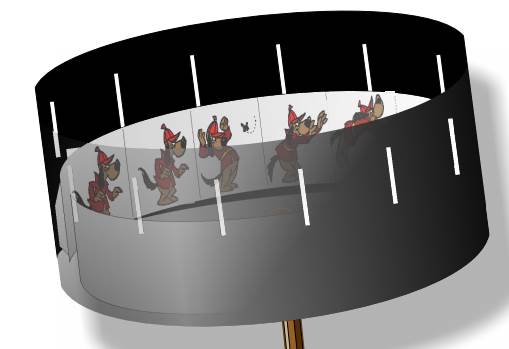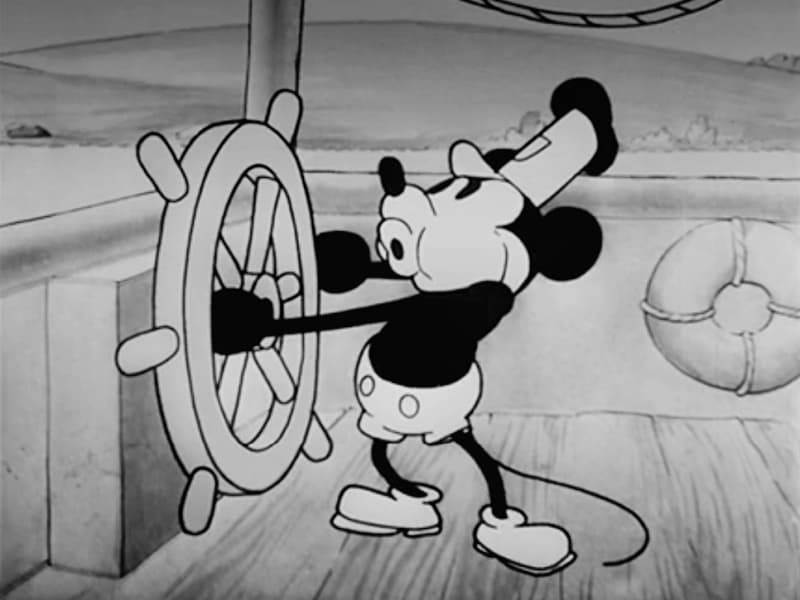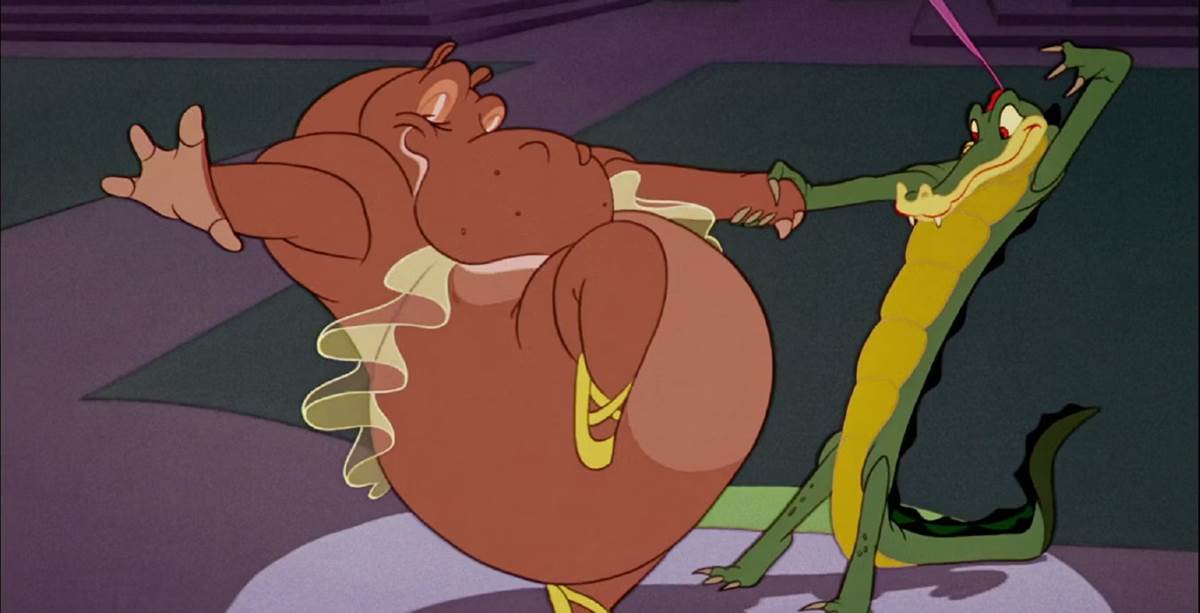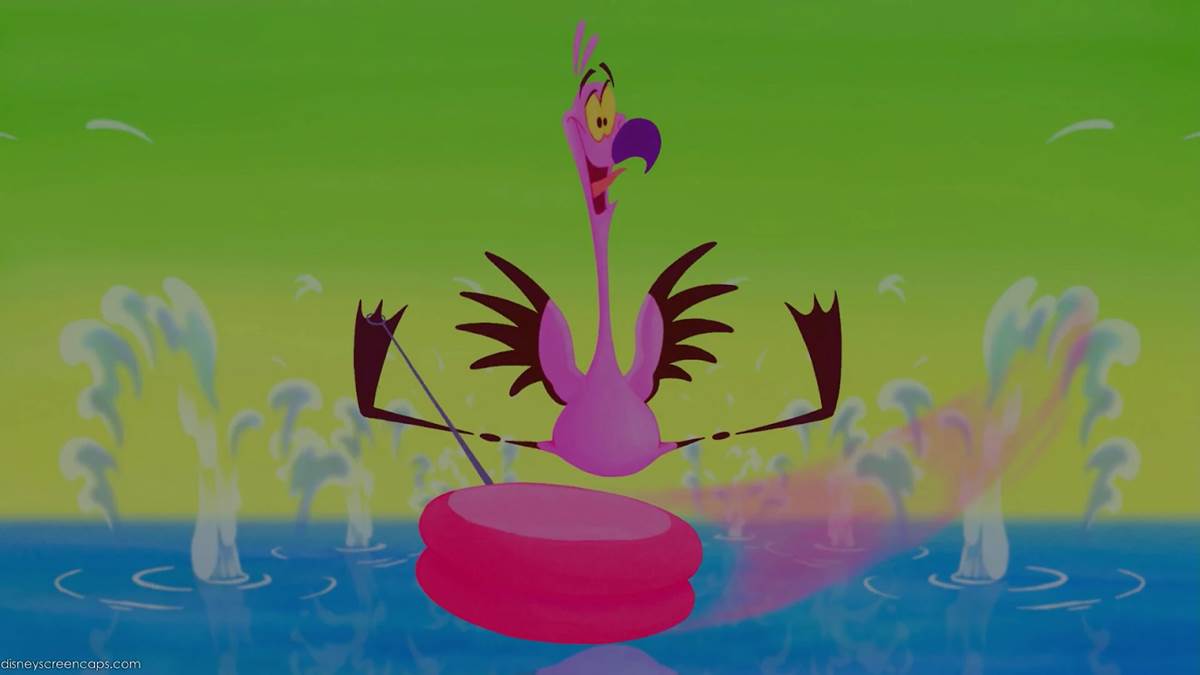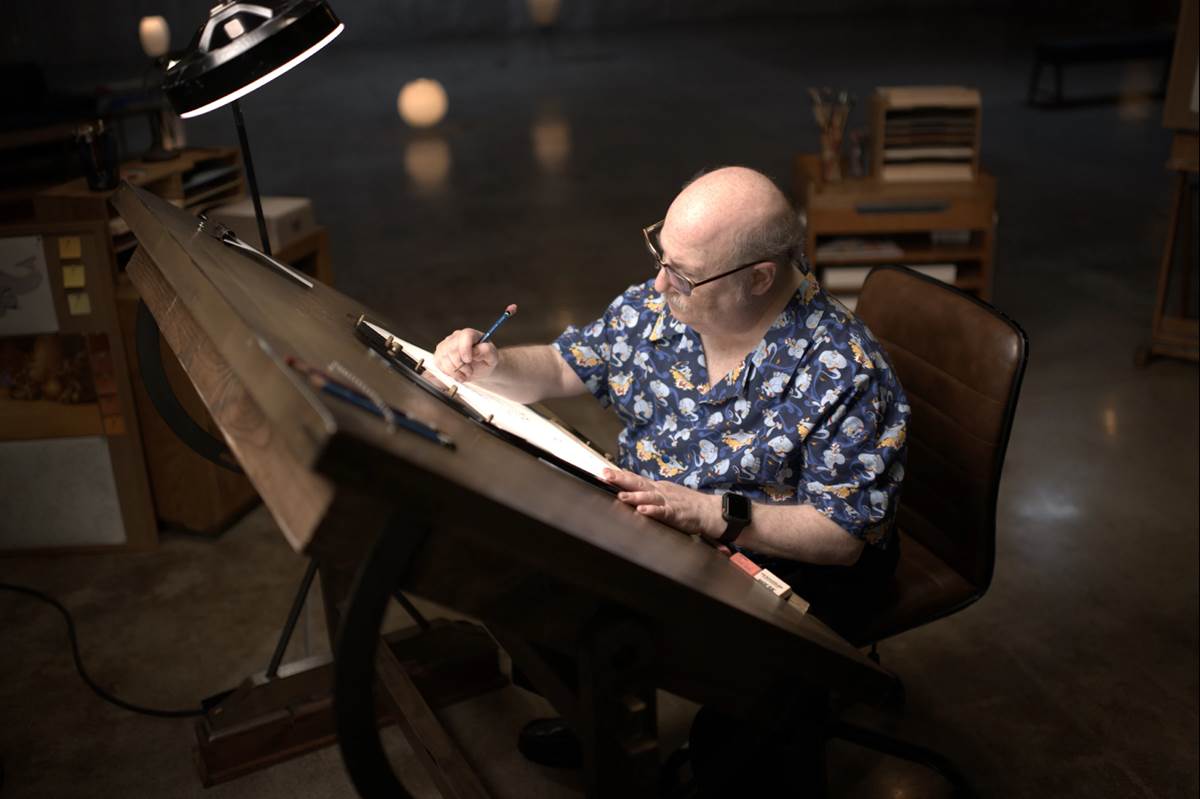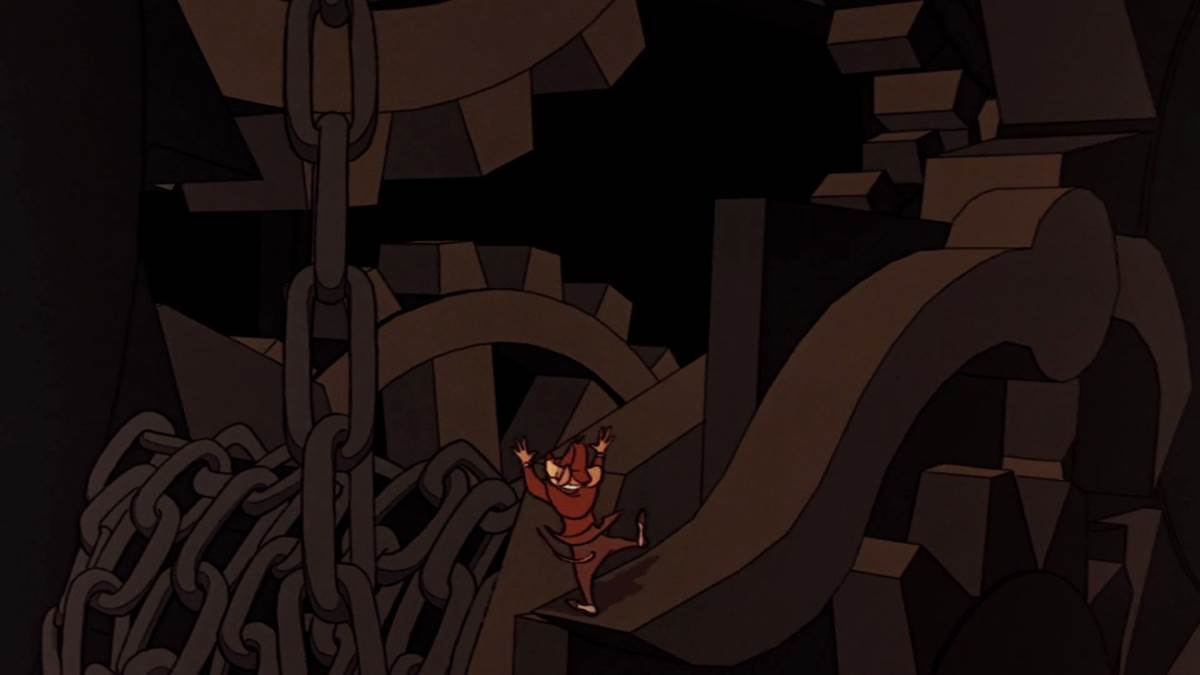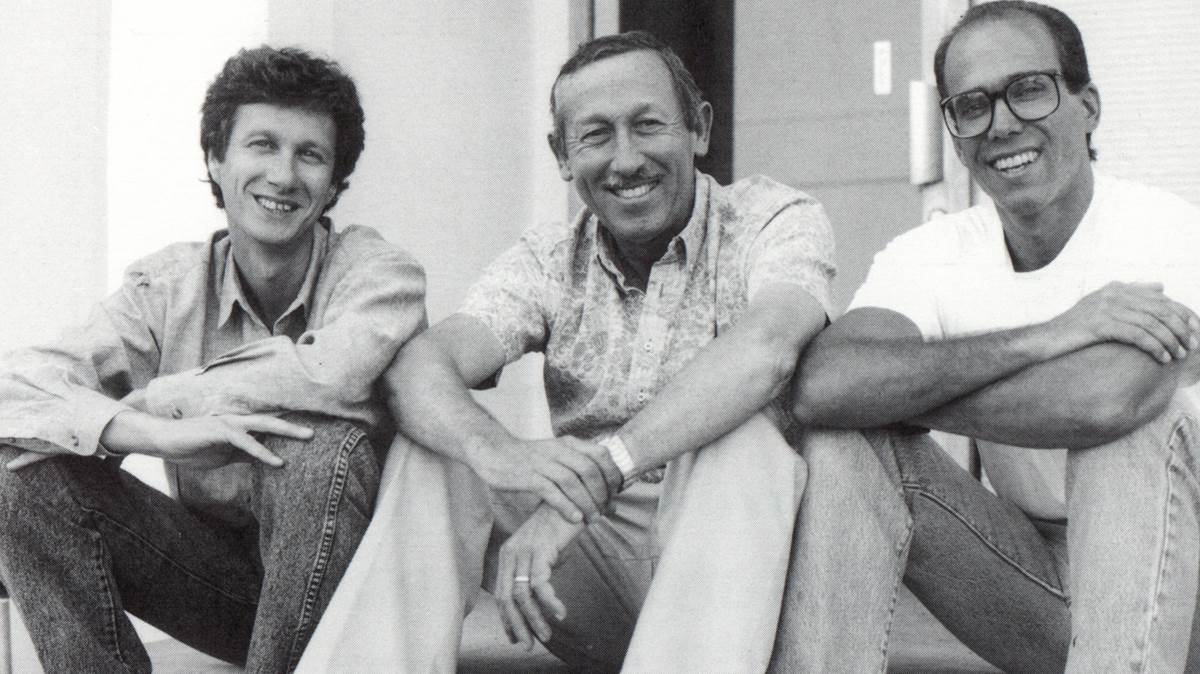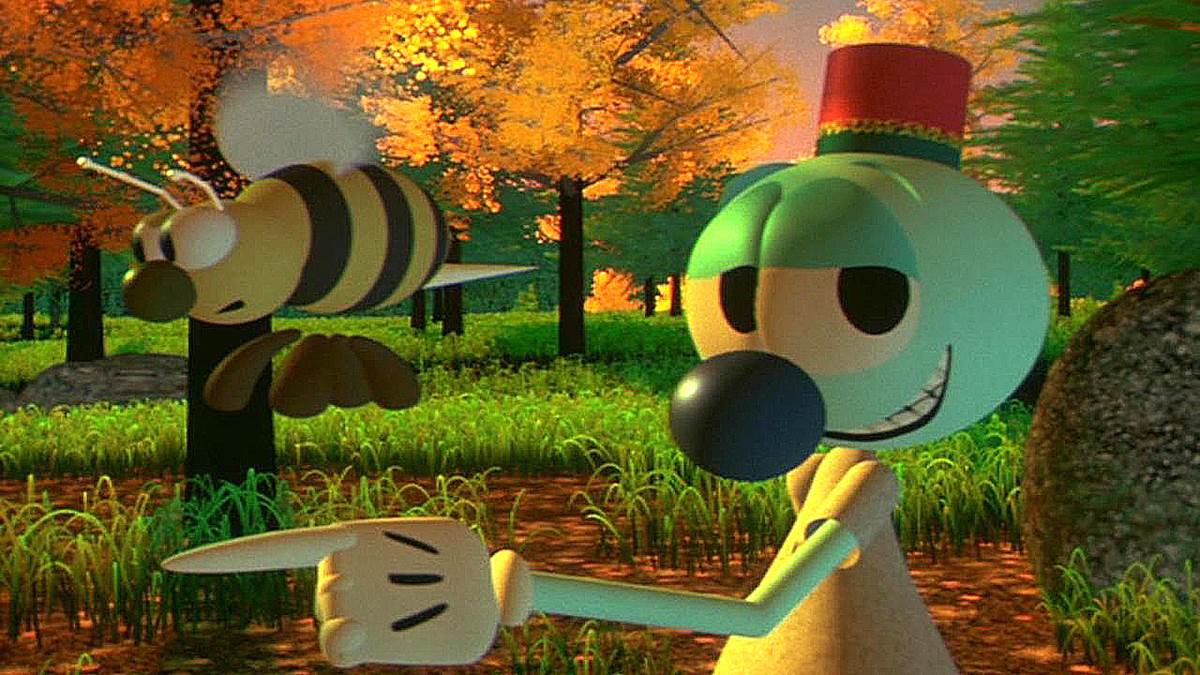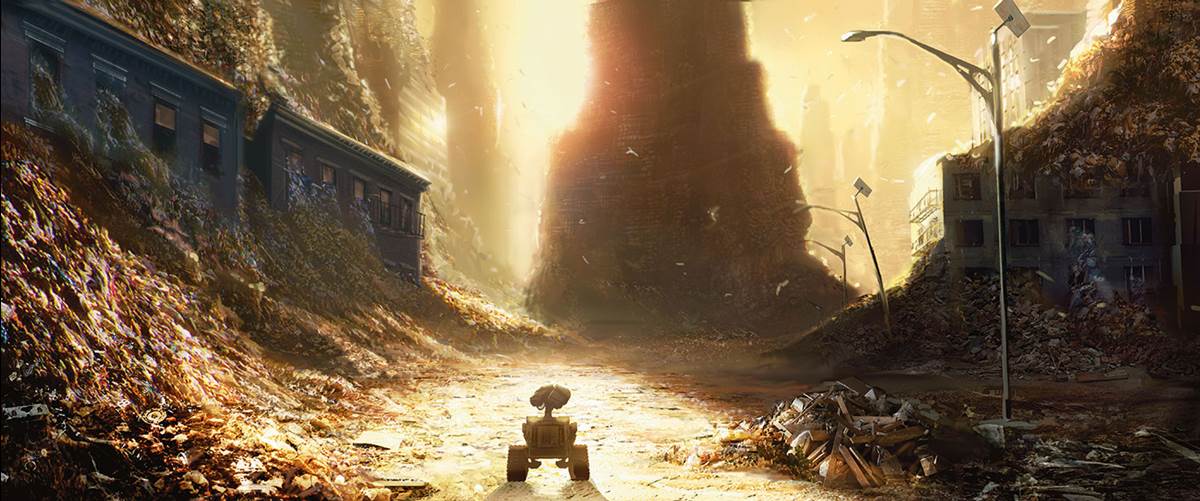Today is a big day for an animation fan like myself. Today marks the 20th annual International Animation Day, and as such, I’m going to give you a few recommendations from the Disney and Pixar catalog to help celebrate through the weekend! Yeah yeah, Halloween, blah blah. International Animation Day. That’s the big deal here. Let’s begin.
In 2002, the International Animated Film Association (Association Internationale du Film d’Animation) created this unofficial holiday to commemorate the day when animation had its first public appearance – October 28, 1892 – at the Grévin Museum in Paris, when Charles-Émile Reynaud and his Théâtre Optique presented his first production, Pantomimes Lumineuses. It was a collection of three cartoons, ‘Pauvre Pierrot, Un bon bock, and Le Clown Et Ses Chiens. It was 1888 when Reynaud patented Théâtre Optique, a machine that produced images on a screen using 36 mirrors, two magic lanterns or supplementary lights that were the source of a stationary background, and a projector. The images were painted on a long band that would be wound up on two spools that had to be rotated by hand. Working the spools demanded some skill, so it was usually Reynaud’s hand. Each of the three animations consisted of 500 to 600 individually painted images and ran for about 15 minutes. Reynaud acted as the projectionist and a piano player accompanied him. Actors on the side provided the dialogue. This leads my to my first recommendation on how to celebrate:
Steamboat Willie
While technically the third Mickey Mouse cartoon produced, this short film directed by Walt Disney and animated by Ub Iwerks is widely recognized as the debut of the iconic character. However, that is not why I’m bringing it up on this list. Aside from the distinct personality of the character, what wowed audiences was the technological feat that Walt brought with this short – synchronized sound. No longer would someone have to play music live in the theater (though that trend is now becoming a niche of its own today), and Walt had lived up to a promise he made to himself after seeing The Jazz Singer, producing a cartoon with fully synchronized sound and a fully post-produced soundtrack. In 1998, the short was also adopted into the United States’ National Film Registry, selecting it for preservation and deeming it “culturally, historically, or aesthetically significant.” In this same idea, you can also pop on Flowers and Trees, also adopted into the National Film Registry, this was also the first animated short that was animated in full color. Part of the Silly Symphonies, which helped pioneer the artform as well, with shorts like The Skeleton Dance and later, The Old Mill. Oh, and you know, that whole “it was all started by a mouse” bit.
Fantasia
Any list I could possibly conjure about ways to celebrate the art of animation would be severely lacking if I didn’t mention Fantasia. This “Concert Feature” is a beautifully abstract collection of sequences in different styles and stories all played alongside classical music. While mostly known for “The Sorcerer’s Apprentice” starring Mickey Mouse and the magical Yensid and a number of brooms, or even “Night on Bald Mountain” featuring the fearsome Chernabog, this film is a veritable smorgasbord of animation technique, artistry, and skill. Fantastical sequences like the hippos and crocodiles of “Dance of the Hours” run alongside serious moments in the “Rite of Spring.” All pushing the envelope and artistry for the era. In fact, “Dance of the Hours” even prompted a book about the art of animating dance sequences themselves. Called Hippo In A Tutu, the book showcases technique, anecdotes, and the long difficult process of animating dancing objects from Fantasia up through Beauty and the Beast and beyond.
“The Carnival of the Animals” – Fantasia 2000
Upon its first release, I recall making a trip with friends to see a special screening of Fantasia 2000 at one of the only IMAX theaters in the state. While I enjoyed the entirety of Fantasia 2000, my companions were very much on the other side of the fence, even remarking that “the best part was the flamingos but it was so short.” In the film, the sequence presents the question: “What would happen if you gave a yo-yo to a flock of flamingos?”, as well as the follow up question, “Who wrote this?” As I grew and studied more of the artform, I learned that much like Ub Iwerks in Steamboat Willie and the early cartoons, this sequence (explaining why it was so short as well) was almost single handedly animated by Eric Goldberg. Goldberg is most known for his work on Aladdin’s Genie and others, including work on The Princess and the Frog, and even work in performances at the Disney Parks, including Magic Kingdom’s Happily Ever After, and Cirque Du Soleil’s Drawn to Life. The whole thing is astonishing to think about when there are numerous characters moving in sync on the screen, while another one is stealing the show with their yo-yo. Oh, and while he was animating this sequence (and appearing in a cameo in the live-action introduction), he was also directing the classic “Rhapsody in Blue” sequence from the film. In 2010, he won the Winsor McCay Award for a lifetime of achievement in animation. You can also see him in a recent episode of…..
Sketchbook
Now streaming on Disney+, this series takes us onto the desks and into the lives of talented artists and animators. Each episode focuses on a single artist (the aforementioned Goldberg being one of the first entries in the series) teaching us how to draw a single iconic character from a Walt Disney Animation Studios film. As we learn the steps to drawing these characters, we also discover that the artists themselves each have a unique story to tell about how they made their way to Disney and their chosen character. I’ve jokingly said if you somehow combine this series with Jerry Seinfeld’s Comedians in Cars Getting Coffee, this would be the ultimate program targeted specifically at me. While yes, Disney+ offers a series called Zenimation, which features scenes from classic films with just sound effects, this show is more Zen than anything else on the streamer. The two standout entries that I would point viewers to would be Eric Goldberg, as well as Mark Henn. Both are among my favorite animators and played key roles in the Disney Renaissance of the late 80s and 90s.
The Great Mouse Detective
Ahhh yes. The Disney Renaissance. Most people will point at the box office results as the true indicator of when this era began, often pointing to The Little Mermaid. With my feet firmly planted in the meaning of the word – “Rebirth” – that would peg the beginning right after the lowest point, which many (including myself) believe to be The Black Cauldron. Basil of Baker Street— um, er, The Great Mouse Detective, was directed by John Musker and Ron Clements, who later found enormous success with The Little Mermaid, Aladdin, Hercules, and Moana. Together, they tell the story of a heroic mouse that is quite similar to that of Sherlock Holmes. That mouse, Basil, and his sidekick Dr. Dawson set out to unravel the mystery of a missing toymaker who has been kidnapped to create a robotic version of the Queen, so the evil Ratigan can control all of mouse-dom. The film debuted to positive reviews and a bit of financial success, but was outshined by Steven Spielberg’s An American Tale, which also proved that animation is still a viable artform. The Great Mouse Detective also featured something new, and oft overlooked: computer animation. The film’s climax takes place in the inner workings of London’s famous clock tower, Big Ben. Computers aided in the animation of the gears and clockwork and while only on screen for about 90 seconds, the impact that this film and that scene had on the industry is unparalleled. From there, computers would aid in nearly every single animated film that followed, with similar processes on Oliver and Company, a whole new system implemented and used in The Rescuers Down Under, and advancements that would take the studio into a whole new realm of possibilities with Beauty and the Beast, The Lion King, and beyond.
Waking Sleeping Beauty
While not about the animation artform per se, this wonderful documentary chronicles a very turbulent time at the Walt Disney Animation Studios, somewhat mentioned above. However, it goes into detail about how different executives and players in the field at the time shaped the artform and the industry, all told from the eyes of the animators and directors who were there to experience it themselves. It’s a unique perspective (albeit mostly one-sided, candidly speaking) and a unique chronicle of a specific era at the most famous animation studio in the world, that at one point was thought to be nearly dead. Although…if you really want a documentary about the politics in place when making an animated film, there is a really good one out there if you can find it.
The Adventures of Andre and Wally B.
Briefly mentioned above while discussing The Great Mouse Detective, and prominently discussed in Waking Sleeping Beauty, is a computer graphics company that helped Disney develop systems for animation. That group was called Pixar. Developed as a division of Lucasfilm and Industrial Light and Magic, they were venturing into the realm of computer animation with the help of a Disney animator who was fired for trying to use computer animation in a project, but couldn’t get it done cheaper or quicker. That man, John Lasseter, is one of the three main people credited with founding Pixar Animation Studios, alongside computer scientist Ed Catmull and Apple founder Steve Jobs. Before Pixar was Pixar as we know it though, Lasseter developed a short film to show what these graphics computers can do. The Adventures of Andre and Wally B. takes the key principles of animation, like “squash and stretch” and exaggeration, and brilliant timing, and really showcases what the art of animation can look like in a 3D virtual environment. From there, other shorts/experiments were produced that led to films like Luxo, Jr. which gave the studio their iconic logo, Red’s Dream, Knick Knack, and Tin Toy. In fact, it was a Christmas special for television based on Tin Toy that evolved into what would become Pixar’s (and the world’s) first full-length computer animated feature – Toy Story.
WALL-E
I know that it’s super cliche for any animation fan to always choose silent characters as their favorite. Pluto has always been my favorite of the classic characters, Wile. E. Coyote was my favorite Looney Tunes character. Say what you will about Genie in Aladdin, I always liked the Magic Carpet better. Anything where the animator gets to let loose and show off their skill to convey emotion and gravitas all with nothing other than the artform is just perfect. Enter Pixar’s WALL-E. The film tells the tale of the last robot on Earth that was never turned off that was assigned to clean up the planet after humans destroyed it with trash. While the last of humanity is away on a galactic cruise aboard The Axiom, they send down another robot, an Extraterrestrial Vegetation Evaluator or EVE, that scouts the planet to see if humans can return. When WALL-E and EVE meet, the loneliest robot on the planet discovers more than just his directive. I can nerd-out about this film for a series of numerous posts here on the site. One could be about the silent film influences, or even the sci-fi influences. How the animators had to watch Buster Keaton films daily while also binge-viewing movies like 2001: A Space Odyssey. The end product leads to a cinematic masterpiece that showcases modern animation at its finest. There is literally a 40 minute span where not a single word of dialogue is spoken. The story is told through the character animation and the soundtrack. Then, you get the occasional blips of maybe one word here or there but you’re already invested and needing to know what happens next. If you watched this when you were younger and had mixed feelings, try again now. Oh, and if you’re thinking I’m overhyping the movie or fanboying too hard (the latter of which is highly likely) it too was also inducted into the Library of Congress’ National Film Registry, being recognized as “culturally, historically, or aesthetically significant.” The only other Pixar Animation Studios feature film to have this honor is Toy Story. It is also being released later this year as part of The Criterion Collection, a collection of films released on home platforms that have been deemed important in some way, and each film in the collection is an exemplary film of its kind. In fact, WALL-E is the only film from either Pixar or Walt Disney Animation Studios that is in this collection.
If none of these are up your alley for the weekend, try some of these Honorable Mentions as well:
Who Framed Roger Rabbit?
Frank and Ollie
The Pixar Story
TRON
Beauty and The Beast (1991)
The Reluctant Dragon
Big City Greens Season 2 Episode 28: “Animation Abomination”
Pixar Sparkshorts
Luxo, Jr.
The Story of the Animated Drawing
Snow White and the Seven Dwarfs
Pinocchio (1940)
Walt Disney Animation Studios’ ShortCircuit
All of these titles and more are now streaming on Disney+.

